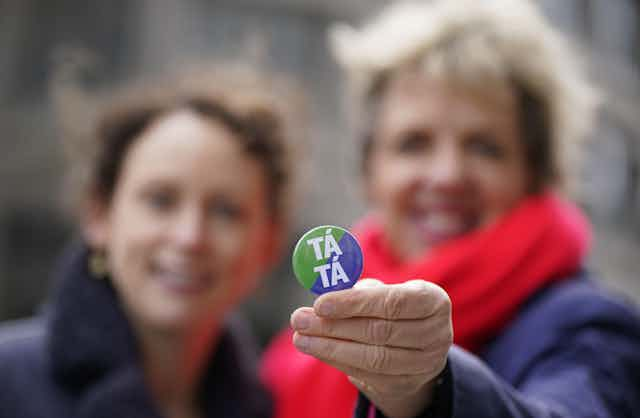The referendums taking place in Ireland on March 8 highlight the importance of language. In two votes, the public will decide whether to change the wording in the national constitution so that it no longer implies that a woman’s work is in the home and that a family is founded in marriage.
The votes also highlight the potential dangers for governments that seek to amend their constitutions. While both votes look set to pass, there are questions around why, in amending the constitution, the current government hasn’t taken the opportunity to better support people who work as carers for family members – or the people they care for.
Eamon de Valera, the primary creator of the 1937 constitution, would not have envisaged the majority of women working anywhere but at home. Equally, it is unsurprising that Leo Varadkar, the current Taoiseach, has been cautious in the wording his government has proposed for the most recent amendments to the constitution. There has been not been much dispute over the proposal to remove gendered language but the proposed replacement text commits the state to “strive” to provide support to people working in the home but not to do any more than that.
This has been taken by many as a missed opportunity and is clear evidence of Varadkar’s reluctance to follow the advice of the citizens’ assembly held on this topic and a parliamentary committee. Both called for a more ambitious form of wording in the amended constitution.
Court rulings and public votes
Political disagreements over Ireland’s constitution date back at least to the 1950s. The courts have long interpreted its wording in surprising ways. Broadly, each case before the courts has reflected the prevalent economic and social attitudes of the time.
The Tilson Case in 1950, which centred around how the children of a Protestant father and Catholic mother should be raised, was the first striking example. It was decided as part of this case that the constitutional article referring to the “special position” of the Catholic church could lead to church and canon law potentially taking precedence over civil law. This article was uncontroversially deleted from the constitution in a 1972 referendum.
It was in that decade, the 1970s, when the major battles began over the constitution. On one side were those who advocated a basic law which upheld traditional Catholic values. On the other were those who argued for a transition to a more liberal, pluralist society. At the same time, an active supreme court was interpreting the constitution in previously unimaginable ways.
A case brought by May McGee in 1973 hinged on the constitutional right to privacy but was aimed at, and ended up overturning, a 1935 ban on contraception.

A successful court case on the right of women to sit on juries followed. But then the 1980s witnessed the first of a series of divisive referendums. A referendum to make divorce constitutional failed in 1986 and barely passed in 1995.
Even more acrimonious was the referendum in 1983 which made abortion unconstitutional but, in actuality, led in 1992 to the supreme court interpreting the same article in the constitution as granting women the right to abortion. There followed more referendums that year and again in 2018, when a majority of people voted in a referendum to legalise abortion.
Lessons from Irish referendums
Ireland has by now held multiple referendums on amending its constitution. Over the course of these events it has become clear that the government is more likely to succeed in getting people to vote for change when it runs an effective campaign that makes them feel engaged. Perhaps more important than that is to prepare the ground well. Governments win support for legislative and constitutional change when those changes are carefully planned and have been clearly articulated and explained to the electorate prior to the referendum.
When that has not been the case, governments have been defeated in their attempts to amend the constitution. Notable examples which stand out here, include the 2001 vote on the European Union’s Nice treaty and then the 2008 vote on the Lisbon treaty. A 2013 referendum on abolishing the senate, the upper house of the Irish parliament also went against the government.
There is some evidence of complacency on the part of the government and political parties ahead of the March 8 referendums but the expectation, generally, seems to be of healthy majority in favour of change. This would follow strong majorities for change in the 2018 referendum to legalise abortion, when 66% of people voted yes, and the 2015 vote that saw 62% of people support same-sex marriage.
The question will not, though, perhaps be whether these referendums transform Ireland into a secular society or more liberal society. It will be whether the state will enact the legislative changes to give effect to the constitution amendments, if passed. Will carers and the people they care for receive real support from the state? And will all families be fully recognised in government policies? That is where the hard work begins.

